We tested the new Specialized Turbo Levo 4
One of the reference eMTBs in the market has just been renewed. Long-awaited, the fourth generation of the Specialized Turbo Levo has generated a lot of excitement. It's not just a restyling, but it incorporates major innovations and some changes in concept. More capacity than ever in a bike that aims to lead the eBike universe. We had the privilege of having it at home for a few weeks to push it to the limit, and here we share our impressions.
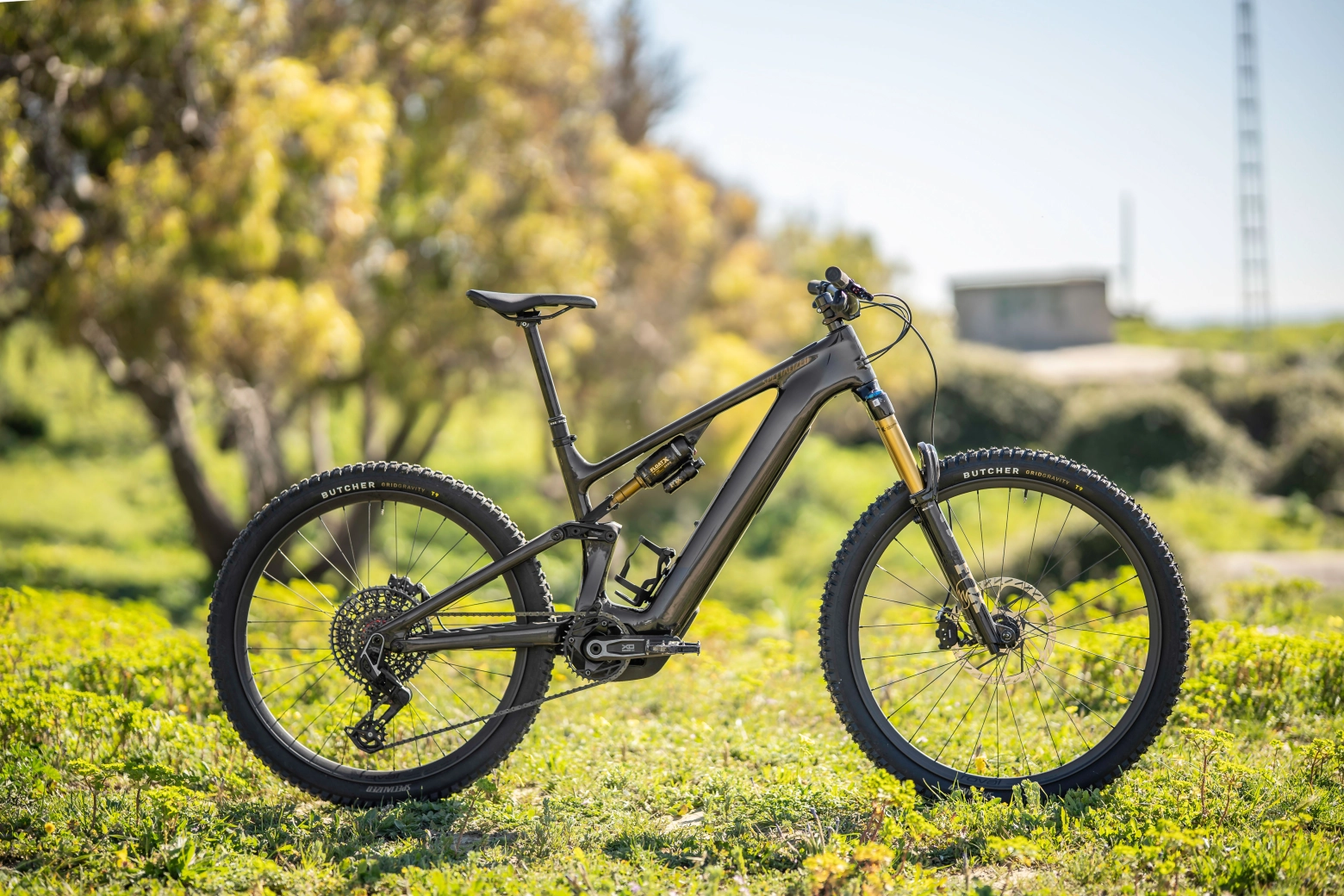
Specialized Turbo Levo 4: re-evolution
The new Turbo Levo breaks with some concepts that accompanied this model, at least in the two previous generations, and there is a striking visual change, unlike the previous renovation where the aesthetics were not very altered, although the behavior was. But there is something that Specialized is clear about, and that is that what works should not be changed, and we can see it, both in the suspension travel, in the Mullet wheel concept, or in the geometry, where we do not see very remarkable changes, and that the Turbo Levo seemed to already have a geometry ahead of its time, as has been evident.
But let's move on to the big news. Visually, the absence of the asymmetrical reinforcement in the shock area is striking. Also, the motor area is much less bulky and a diagonal tube that considerably increases its proportions.
RECOMENDADO

25 cycling gifts ideas to get it right

When do helmets have to be changed? Do they have an expiration date?

How many days should a cyclist rest per week?
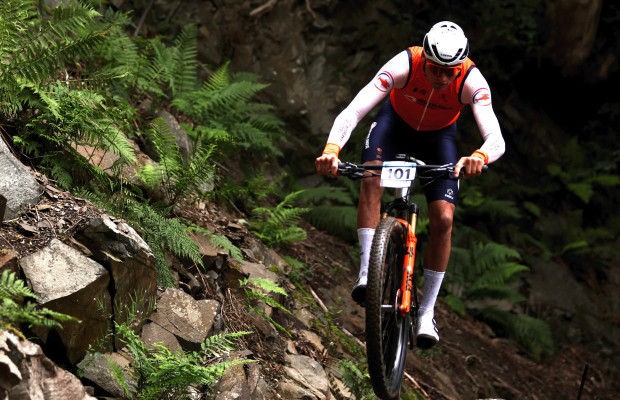
Some reasons to stay away from the road in winter
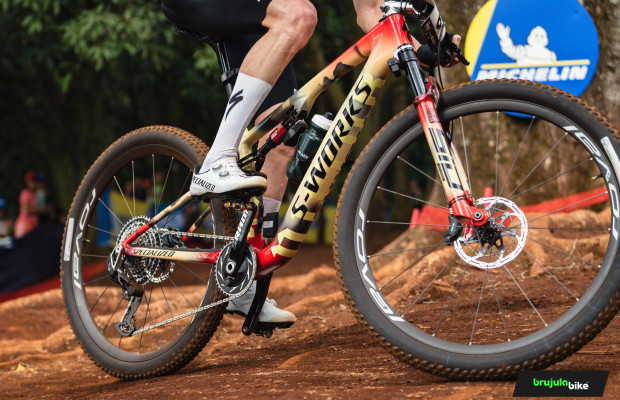
S-Works: what does it really mean and where does Specialized's most exclusive label come from?

The best apps for cycling and mountain biking
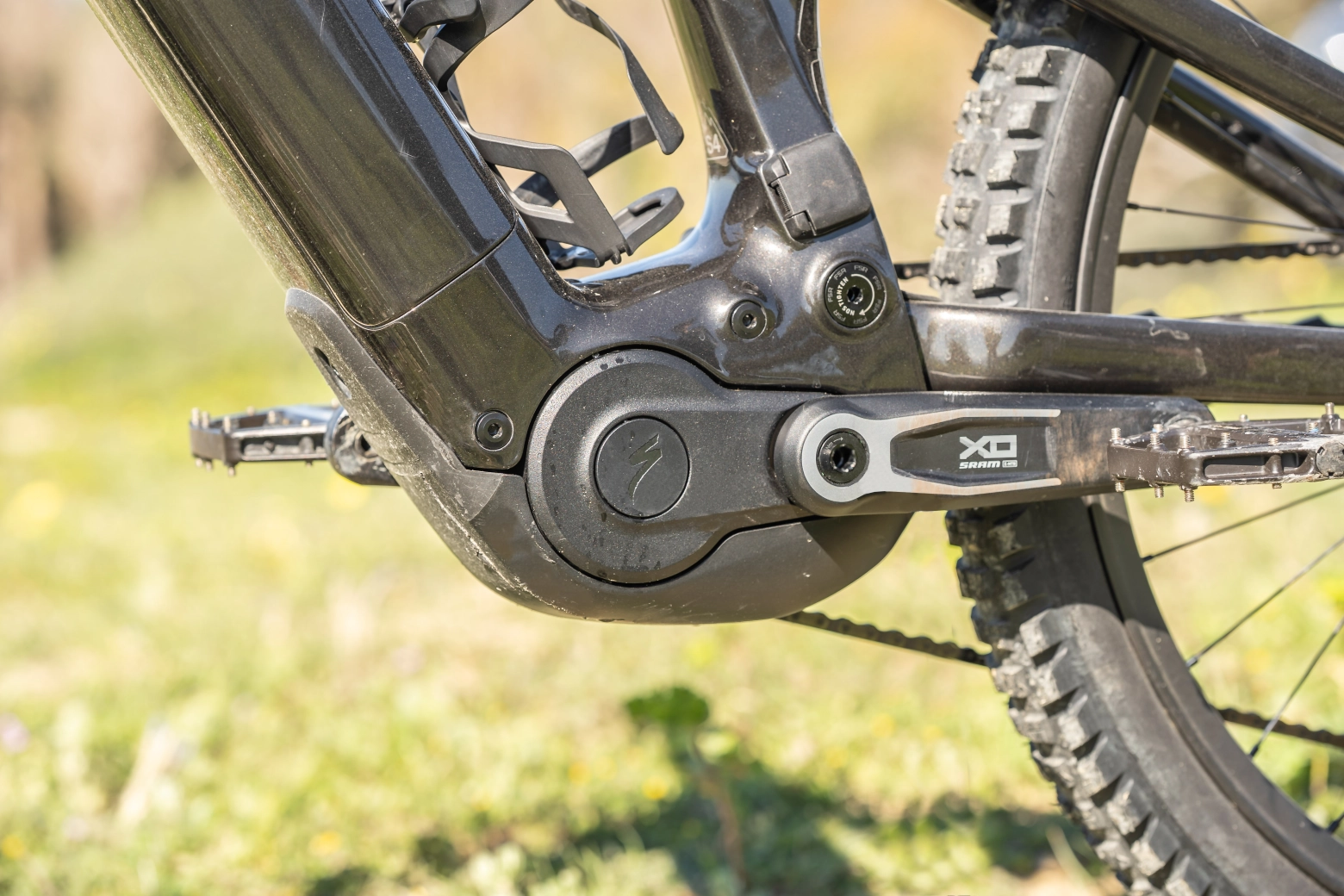
This change is due to the relocation of the motor to a lower area, occupying a space that was previously intended for the battery, which is now extracted from the bottom of the frame. Now the space occupied by the battery starts above the motor, but does not reach the top of the tube, to avoid raising the center of gravity. They have achieved this with a battery of shorter dimensions but slightly thicker.
In this new frame, we can remove the battery from the side of the diagonal tube easily and quickly.
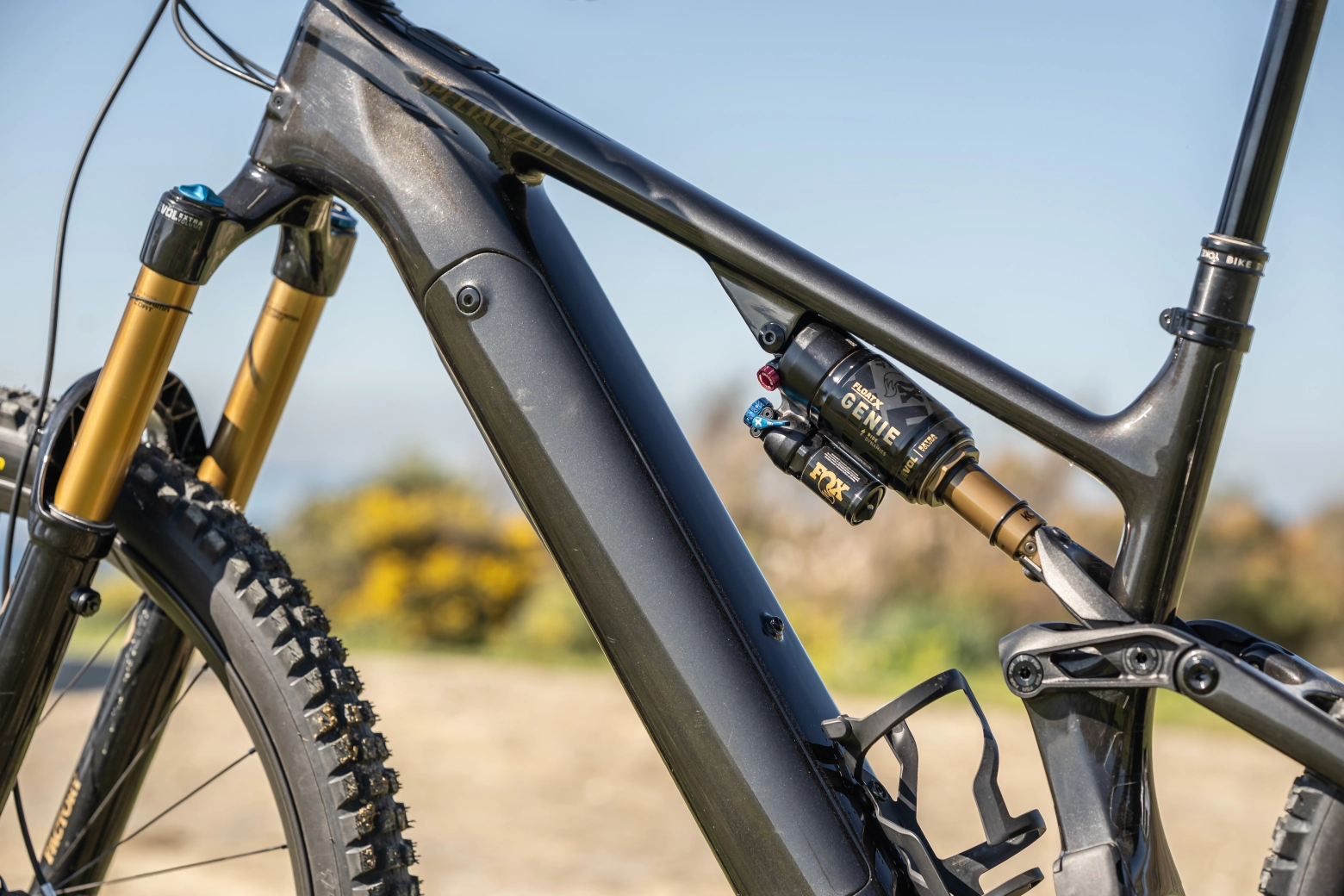
The result is a lower area of the frame with a few more millimeters of ground clearance, which will reduce the possibility of hitting obstacles, and a well-located center of gravity that, as we will see now, we can improve with a slightly smaller aftermarket battery available.
The suspension system has not changed. It remains a 4-Bar type, with a horst link articulation in the stays, providing 150mm of travel. But there is a novelty in the rear suspension, and that is the adoption of the Fox Float X Genie shock, developed by Specialized. This shock, through the use of a double positive air chamber, achieves a very particular compression curve. Being very linear for most of its travel but increasing progressivity in the last section to avoid bottoming out. In addition, through volume spacers, a very high adjustability can be achieved so that, whatever our preferences, we achieve the desired performance.
The rear triangle is now slightly more compact, having reduced the length of the stays by 7mm. An interesting detail is that, having eliminated the central reinforcement in the frame, the main link is attached at the front, forming a single piece, unlike the previous version, where there was a semi-link on each side.
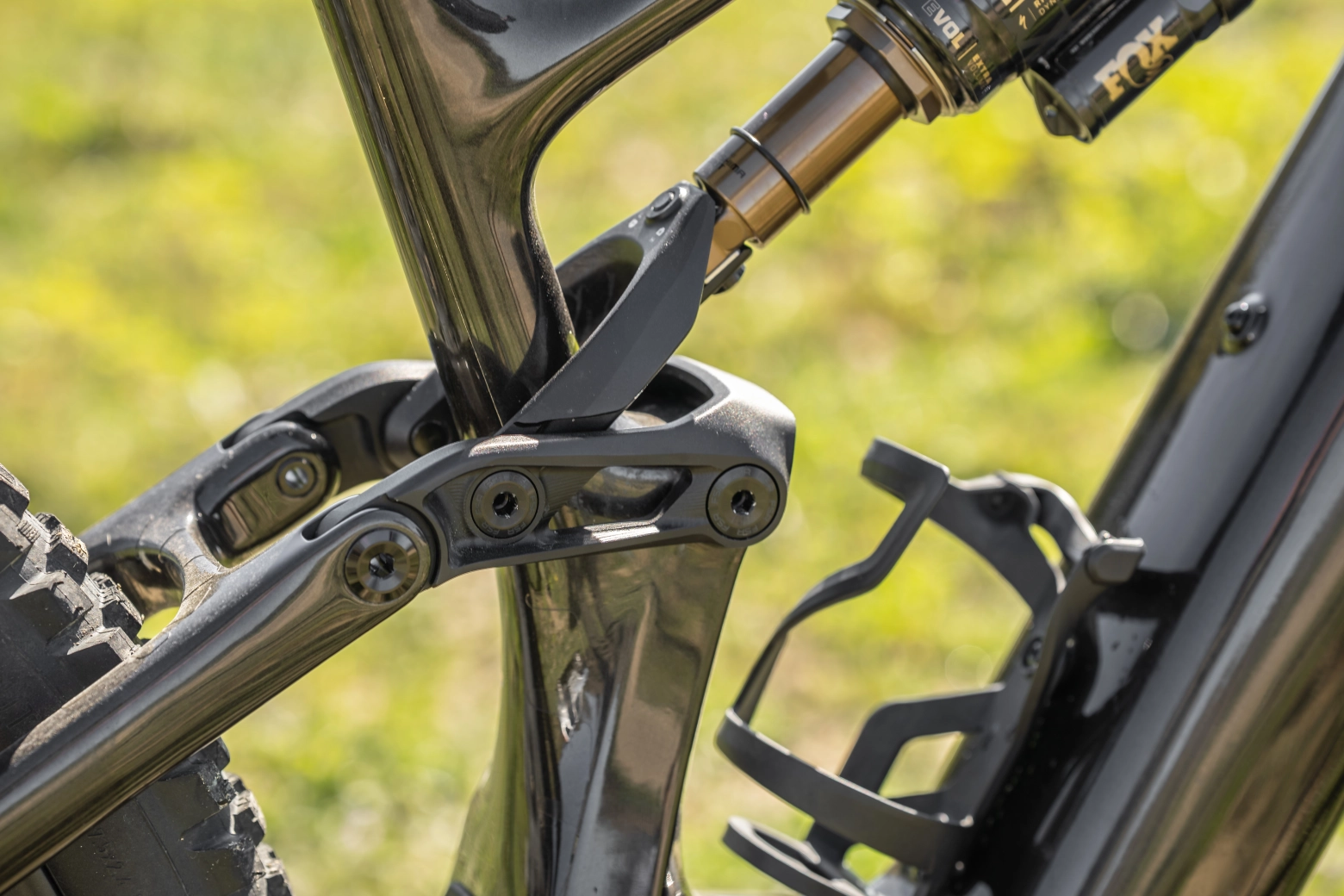
The new Turbo Levo frame is full of interesting details. Taking advantage of the new battery location and the ease of removal, they have used the free space left in the upper part of the diagonal tube to place a particular SWAT bag to store what we need in case of any unforeseen event.
Furthermore, it is worth noting that they have not resorted to internal routing through the steerer tube, although they have changed the cable entry, which is now further forward, in the stem itself. We also like the fact that the rear caliper mount does not require an adapter for a 200mm disc.
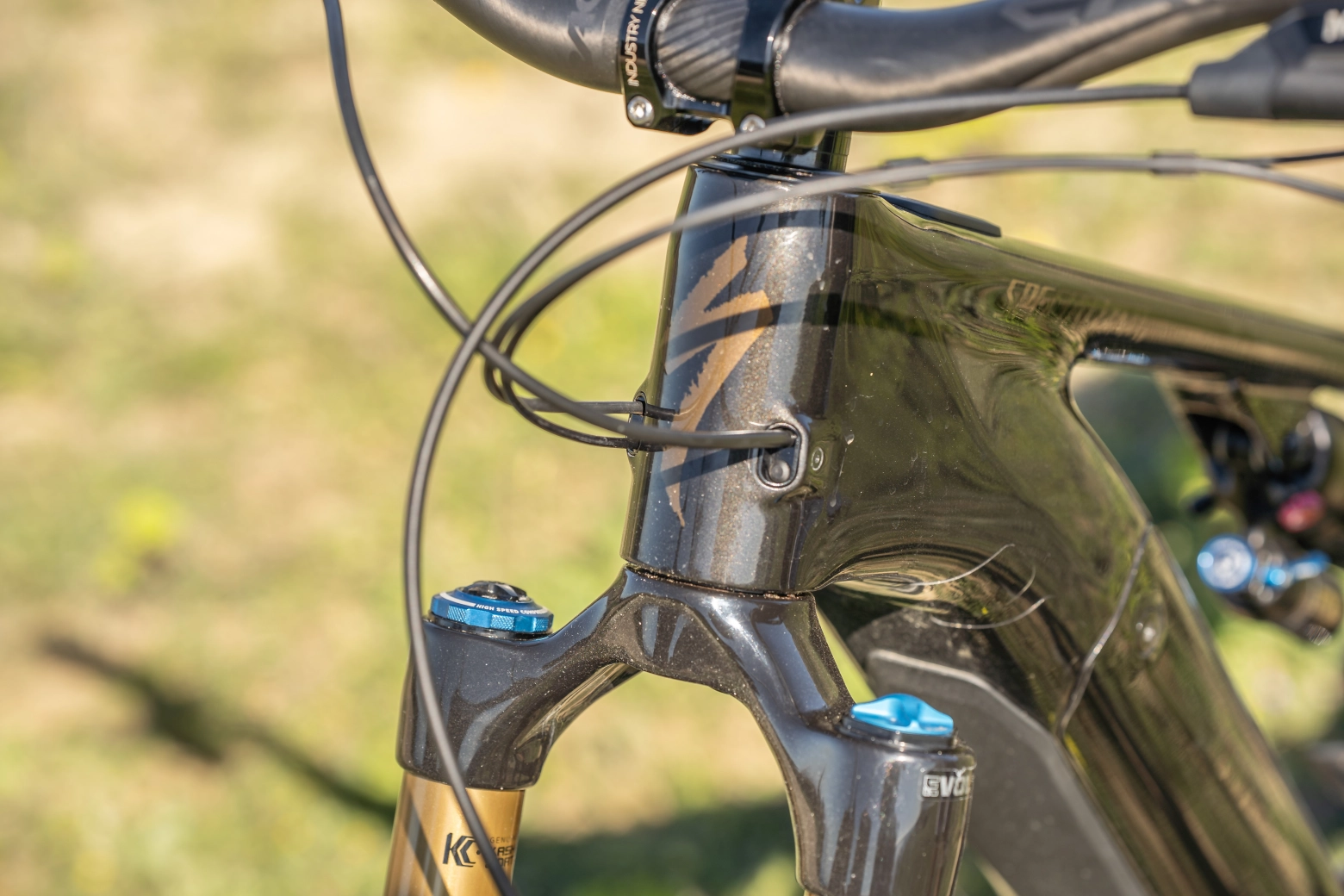
The geometry, as we have mentioned, remains essentially the same, with only very slight tweaks. Although now we have even more customization options. But as it comes out of the box, it has these numbers:
- The head angle remains at 64.5° and the seat angle becomes slightly more vertical at 77°.
- The reach in size M is 455mm. The Stack is identical to the previous generation at 626mm. Also the pedal height is the same at 350mm.
- The stays are slightly shorter at 435mm.
We still have the possibility of installing eccentric headset cups to modify the angle by +1° or -1°. We also find the flipchip in the stays to make them 9mm longer if we flip it. And as a novelty in this generation, we have another adjustment chip in the lower shock mount, through which we can modify the pedal height, raising it by 6mm.
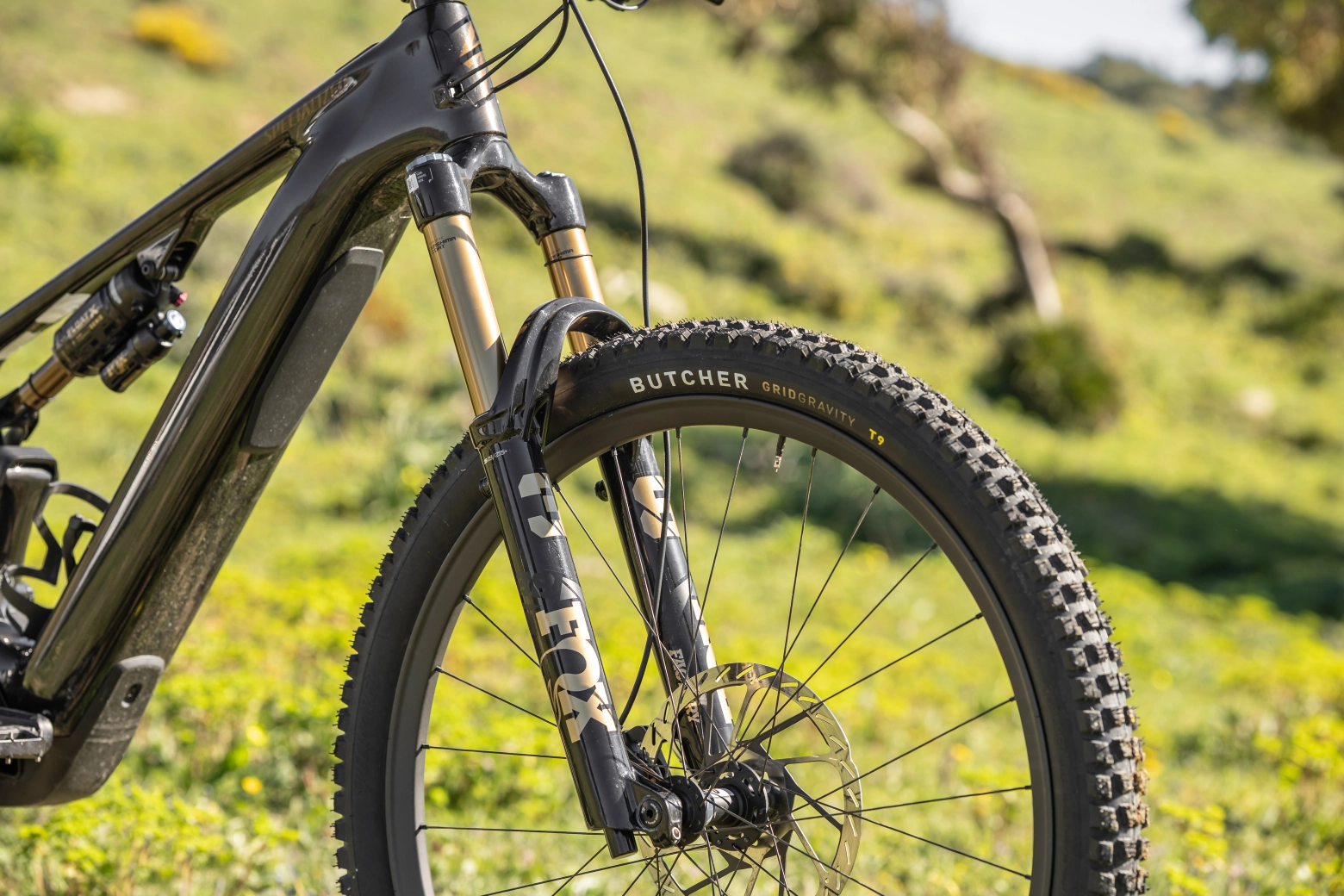
As we can see, more options than ever to configure the bike to our liking, in addition to the fact that the frame is designed to be mounted with a fork with up to 180mm of travel.
New motor and battery: greater capacity in everything
The most notable changes we will find in this new Turbo Levo 4 come from the new 3.1 motor, new batteries, and a firmware that offers us more options than ever and optimized performance at all levels.
Starting with the new 3.1 motor, we find the novelty that it dispenses with the belt, now operating through oversized gears. These are 100% metallic with a hardened finish, so that in any temperature condition it maintains smoothness and efficiency, reduced noise level, and ensuring durability. The 3.1 motor is offered in two versions.
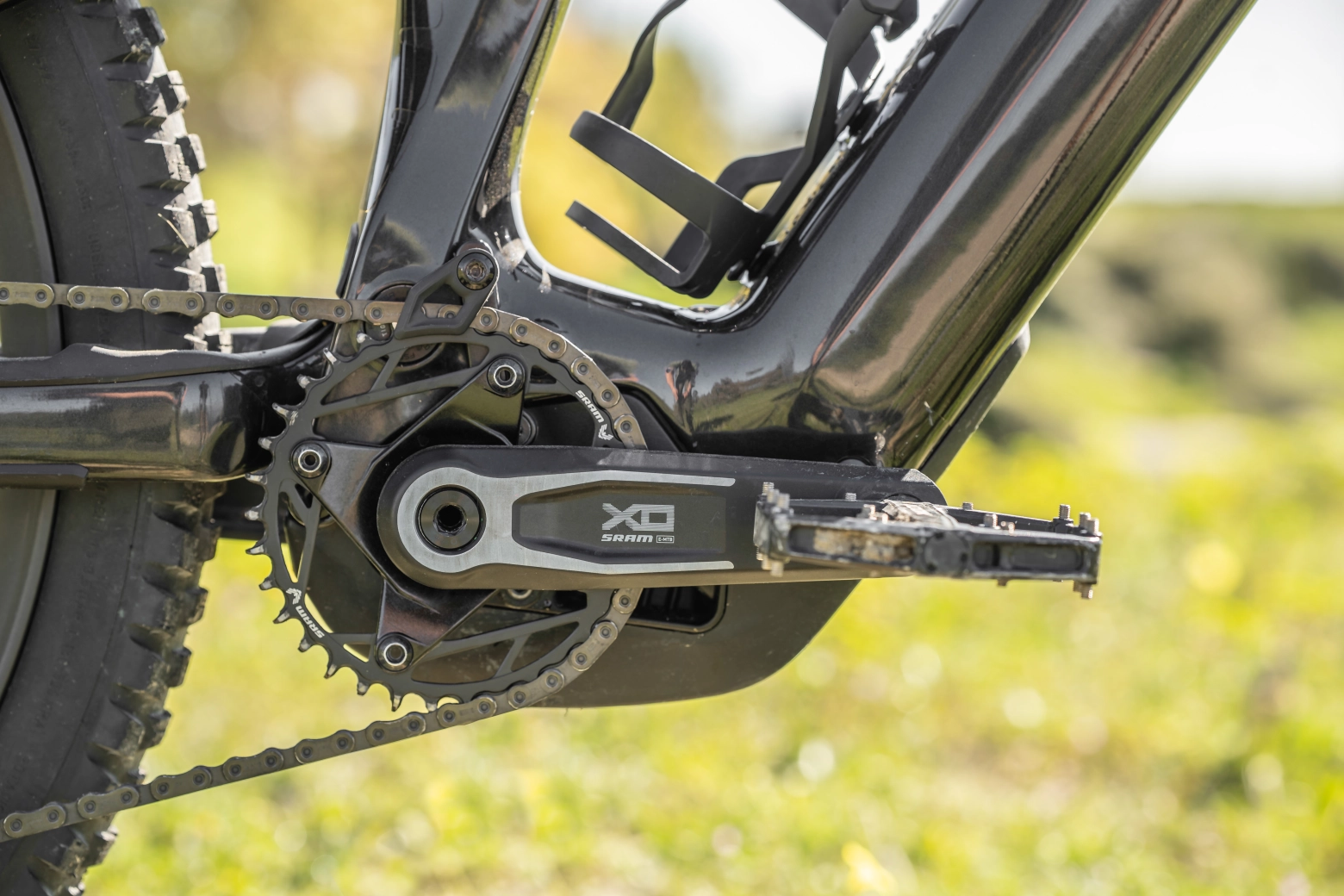
On the one hand, the S-Works version offers a torque of up to 111 Nm and a maximum power of 720 Watts, which represents a 27% increase in peak power compared to its predecessor. In the rest of the range, these values remain at 101 Nm and 666 Watts. As we can see, in either case there is a considerable power increase. But at Specialized, they have made a great effort to make that power very natural, achieving an improvement in terms of sensors and firmware so that the assistance is controllable at all times.
And in terms of batteries, we also have more capacity and options than ever.
The battery that comes standard on the Turbo Levo 4 has a capacity of 840 Wh, but we have the option to purchase a separate 600 Wh battery that, in addition to being lighter, concentrates its weight in the lower part of the diagonal tube, lowering the center of gravity and thus improving bike handling.
And we also have the option to mount an extender on the bottle cage that gives us an extra 280 Wh.
According to real-world usage estimates provided by the brand for an 80 kg rider, using the ECO mode and with considerable elevation gain, with the standard 840 Wh battery we have an estimated autonomy of about 4 hours.
New assistance modes and maximum customization
The new Turbo Levo presents great innovations also in terms of assistance management. What we can see at first glance is a version of the MasterMind display with a larger size and high definition. It also introduces a new remote control with which we can manage the assistance modes and control what we want to see on the display. This remote control has two buttons and an additional one in the center, like a tab, that we can move up, down, and in.
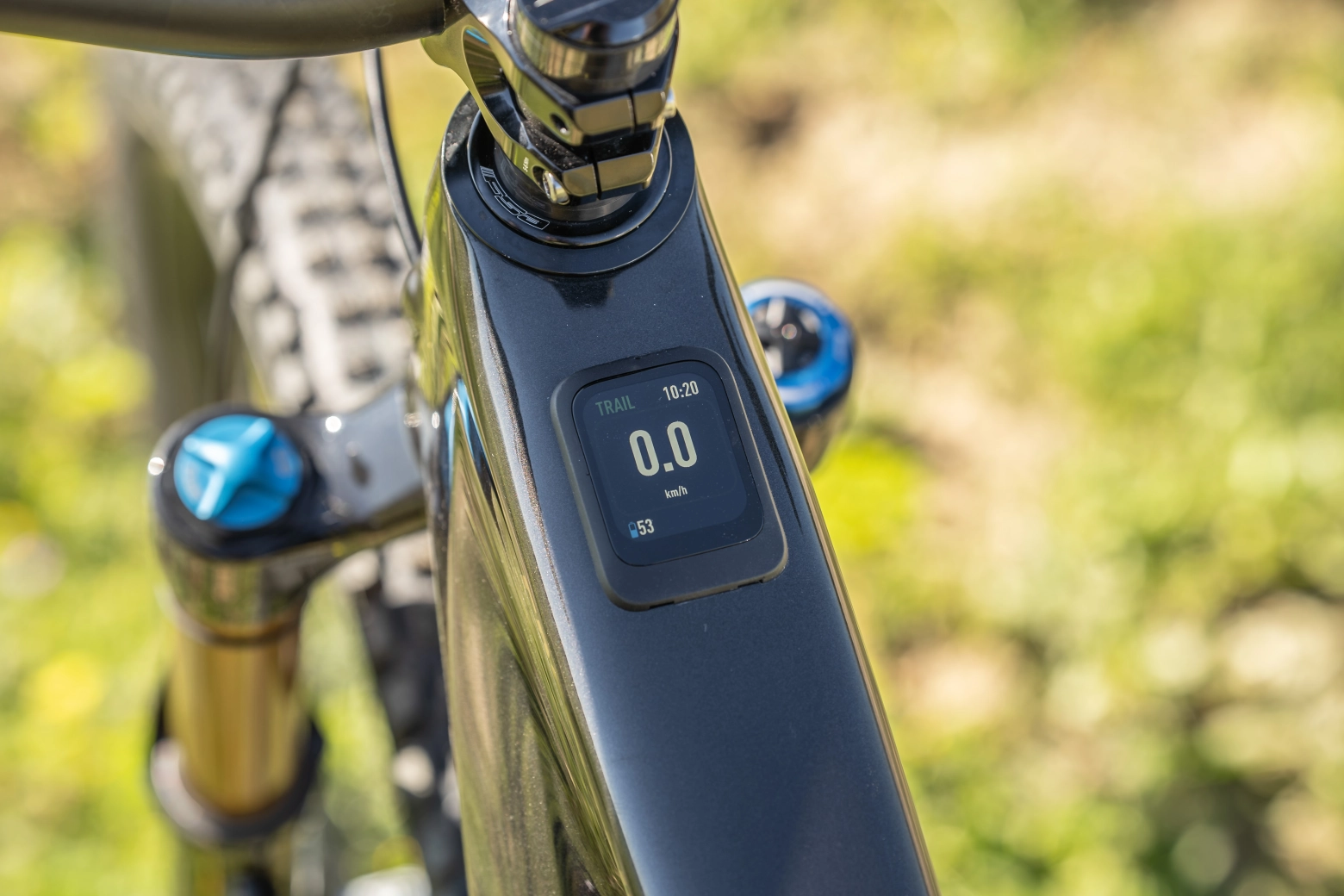
Focusing on the assistance modes, we still have the modes that existed in the previous generation, which are ECO, TRAIL, and TURBO. All three are fully customizable in terms of assistance percentage and maximum power in a very visual way in the application.
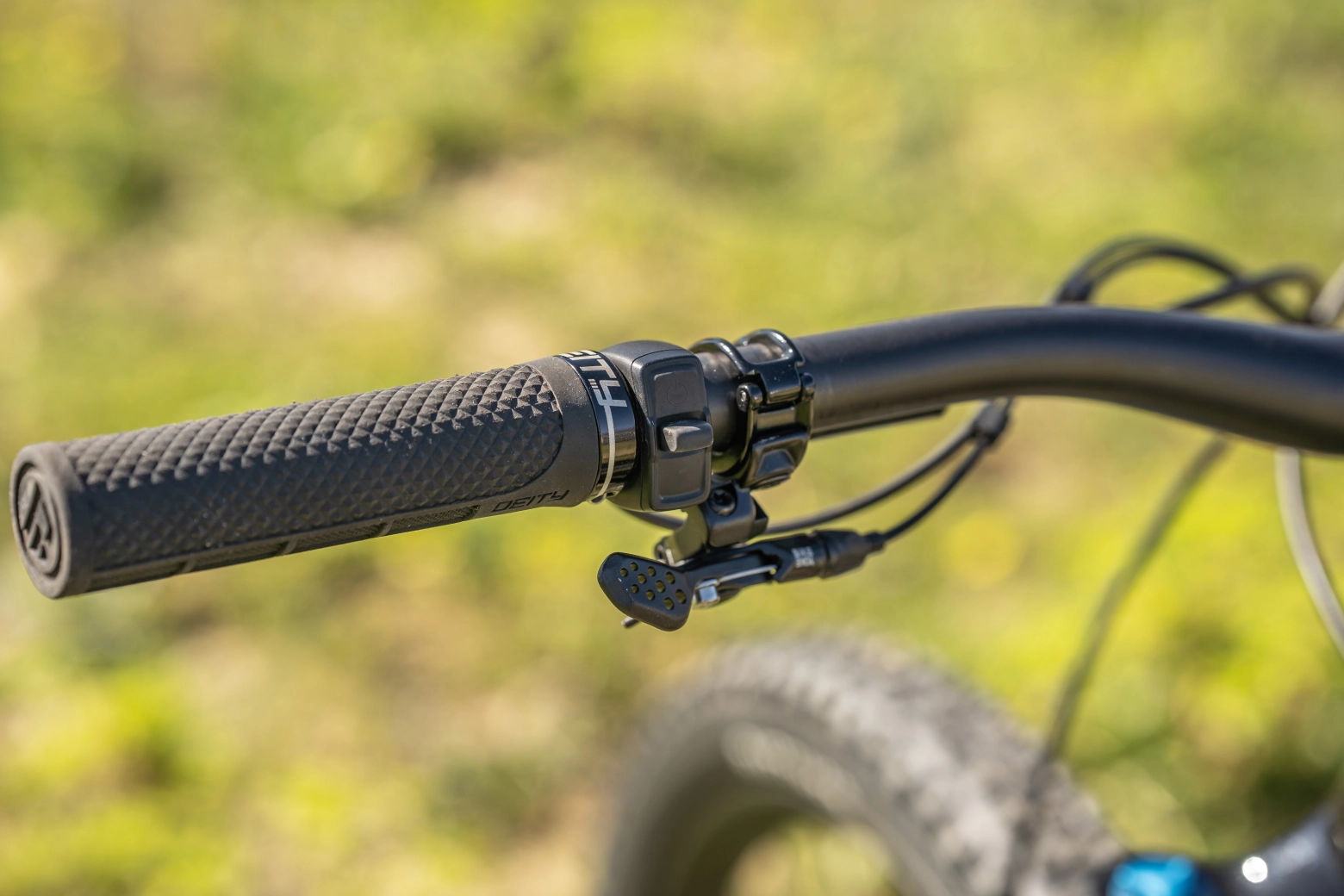
But now we also find a new AUTO mode, which is a dynamic mode that adapts to our pedaling at all times and will give us more assistance when we are making a greater effort, and will assist us just enough in moments of less demand. This AUTO mode can also be modified through the Specialized App in three levels.
But for those who prefer to constantly control the assistance, we can enter the micro-adjustment modes.
To operate with these modes, we must press the central button upwards for two seconds.
There are two micro-adjustment modes, normal and dynamic. In normal micro-adjustment (which already existed in the Levo Gen3), we can vary the assistance in 10% increments, and we change both the assistance and the maximum power at the same time. But with a long press of the central button inwards, we enter the dynamic micro-adjustment, where the maximum power is not limited and we vary the assistance in 10% increments, but if our effort increases, we will not be limited in terms of maximum power.
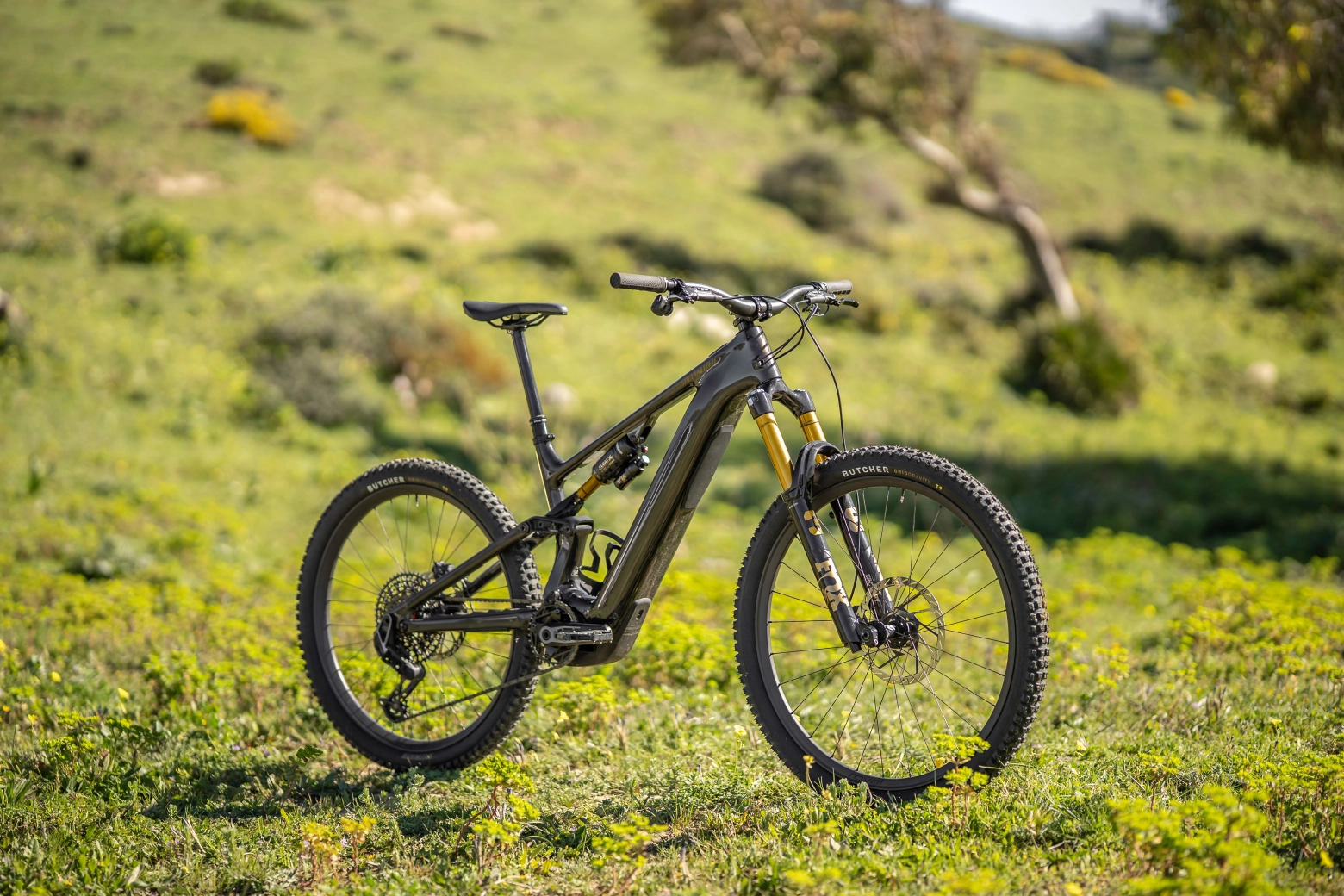
As we can see, whatever our preferences or driving style, we find in the Turbo Levo 4 a mode that will adjust to us.
But apart from the modes, in the Specialized application, we can modify many more things. A key aspect is the acceleration response, which we can adjust in three levels. At the minimum, the bike would be very docile on the first pedal stroke, but in uphill starts where we need quick thrust, we may need a livelier response.
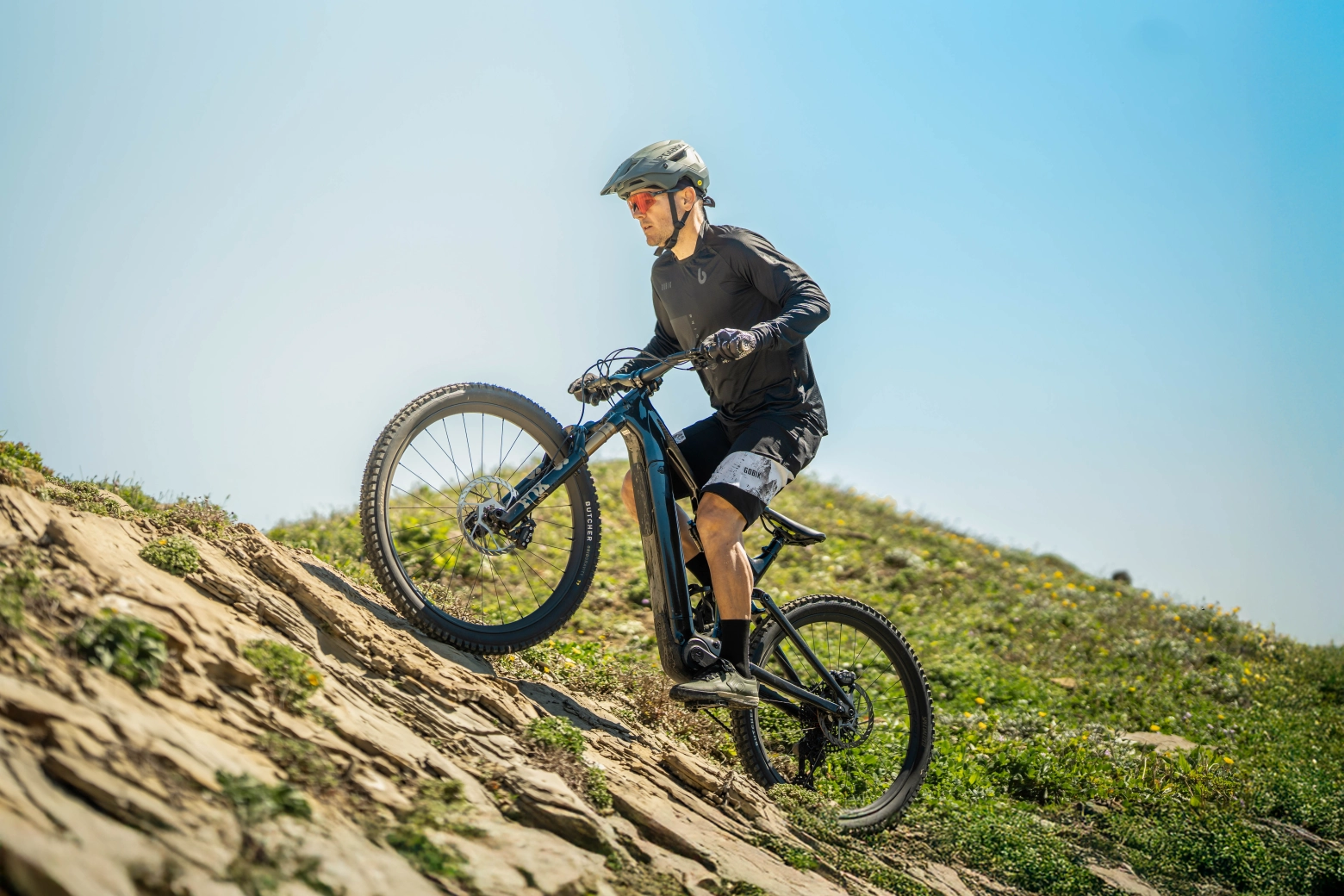
Another really interesting adjustment is the Overrun, which is the time the bike continues to assist when we stop pedaling. It is a kind of delay in stopping the assistance. Leaving it at the high level can help us overcome some obstacles where we have to stop pedaling because the cranks hit the rocks, but it also makes the bike a bit wild in some stops if we are not used to it. It is also adjustable in three levels.
The Shuttle is another kind of extra help that we can adjust in the app. By increasing the Shuttle level, the bike will assist us in general requiring less effort on our part. It can be useful at some point when we are really tired if we have the battery for it, as it will increase consumption.
All these adjustments have to do with the bike's operation, but through the application, we can also customize the display screens, lock the bike, set an alarm if it moves while locked, and many more options.
The Specialized Turbo Levo 4 Pro in action
Spectacular setup to face anything without hesitation
The bike we had with us is the second in the range, just behind the S-Works model.
In its assembly, of true luxury, we see that the most powerful options have been chosen. As an example of this, we can mention a fork with 38mm stanchions, reinforced tires both front and rear, and extremely powerful brakes like the Sram Maven, with 220mm and 200mm discs (an incredible braking power).
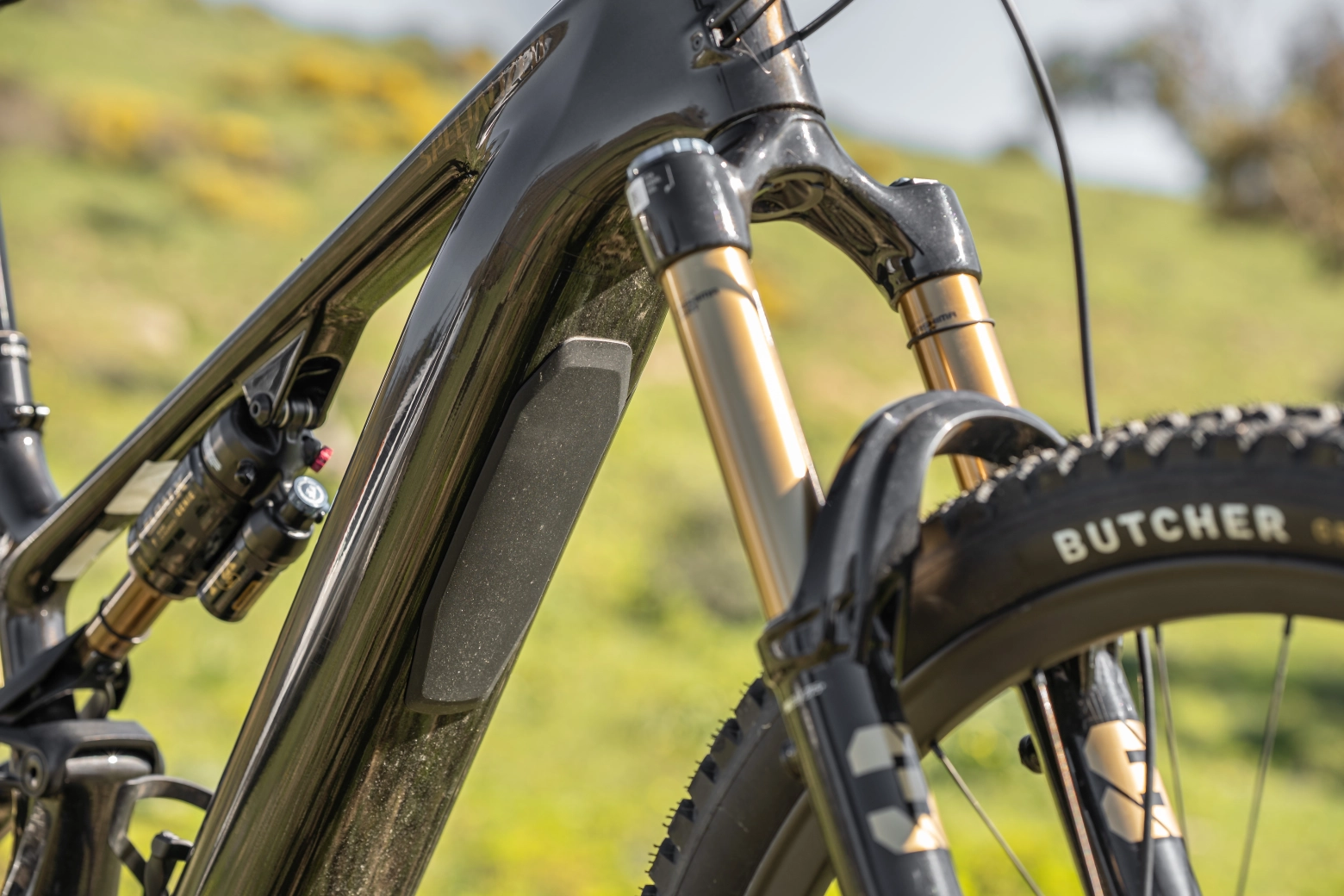
Starting with the suspensions, we have the best from Fox, with its 38 Factory Kashima fork with GripX2 cartridge that offers us 160mm of travel. The shock is the Fox Float X Factory Kashima, but in the Genie version, customized for Specialized.

The complete transmission is entrusted to the Sram XO T-Type group, including its specific eBike cranks of 155mm. The brakes, as we mentioned, are the Sram Maven in Silver version. The wheels are the spectacular Roval Traverse HD in a combination of 29" front and 27.5" rear, with an asymmetric rim with 30mm internal width and very particular shapes. The hubs are DT Swiss 350.

The tires are the newly renovated Specialized Butcher with Grid Gravity casing in a width of 2.4". In the rest of the components only the saddle is from the brand, with a Bridge Mimic Expert. For the rest it uses other prestigious brands, such as its Race Face ERA Carbon handlebar, the Industry Nine A35 stem, or the Bike Yoke Revive Max 3.0 seatpost.
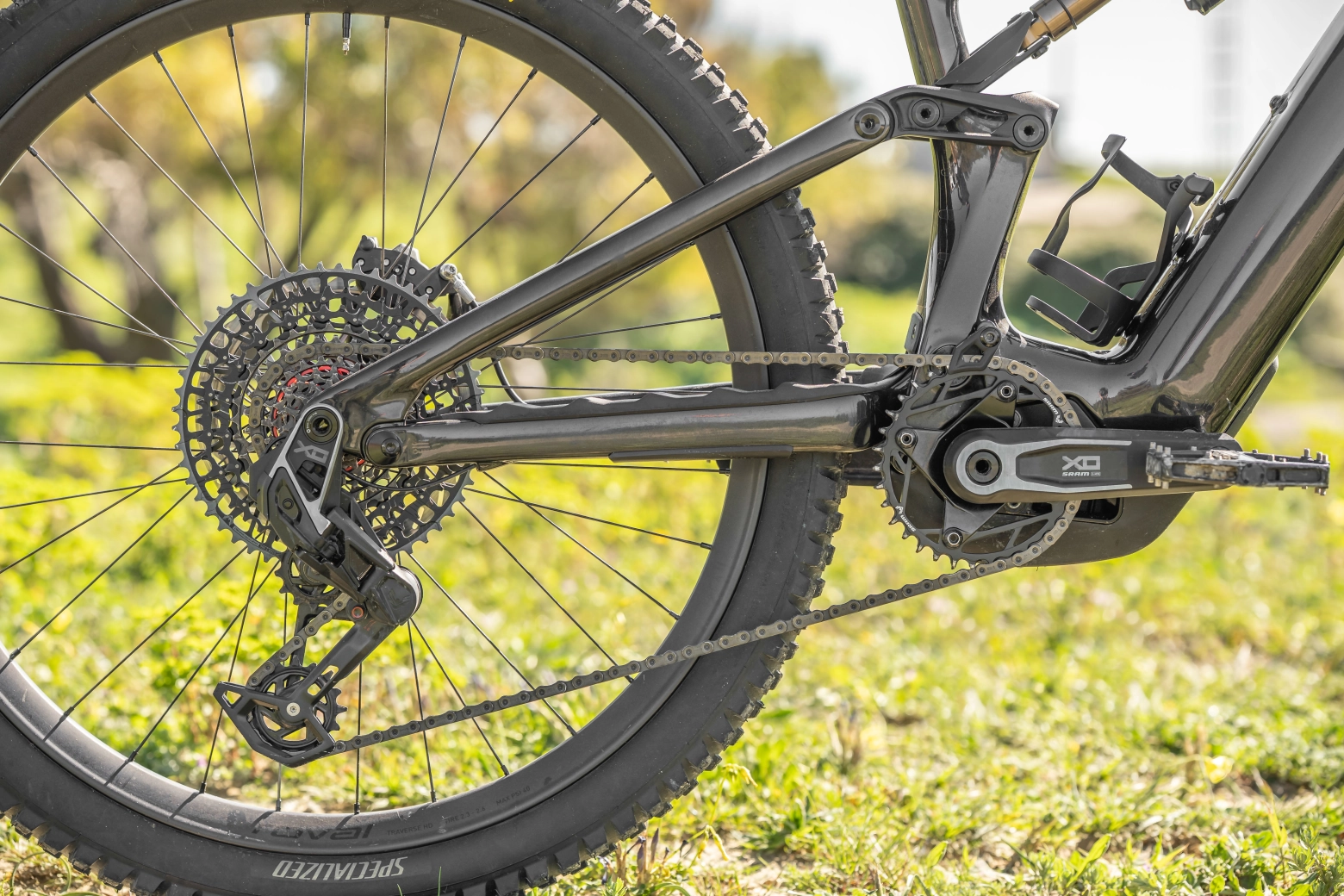
Riding the Turbo Levo 4 live
We can't deny that we had great expectations for a bike that we had been waiting for a long time. At first glance, the difference in shape compared to the previous version is striking. The engine area is much smaller than before but, on the other hand, the down tube is much bulkier. Anyway, although there are relevant changes, it is easy to identify it at first glance as a Specialized, due to its suspension system and its particular design.
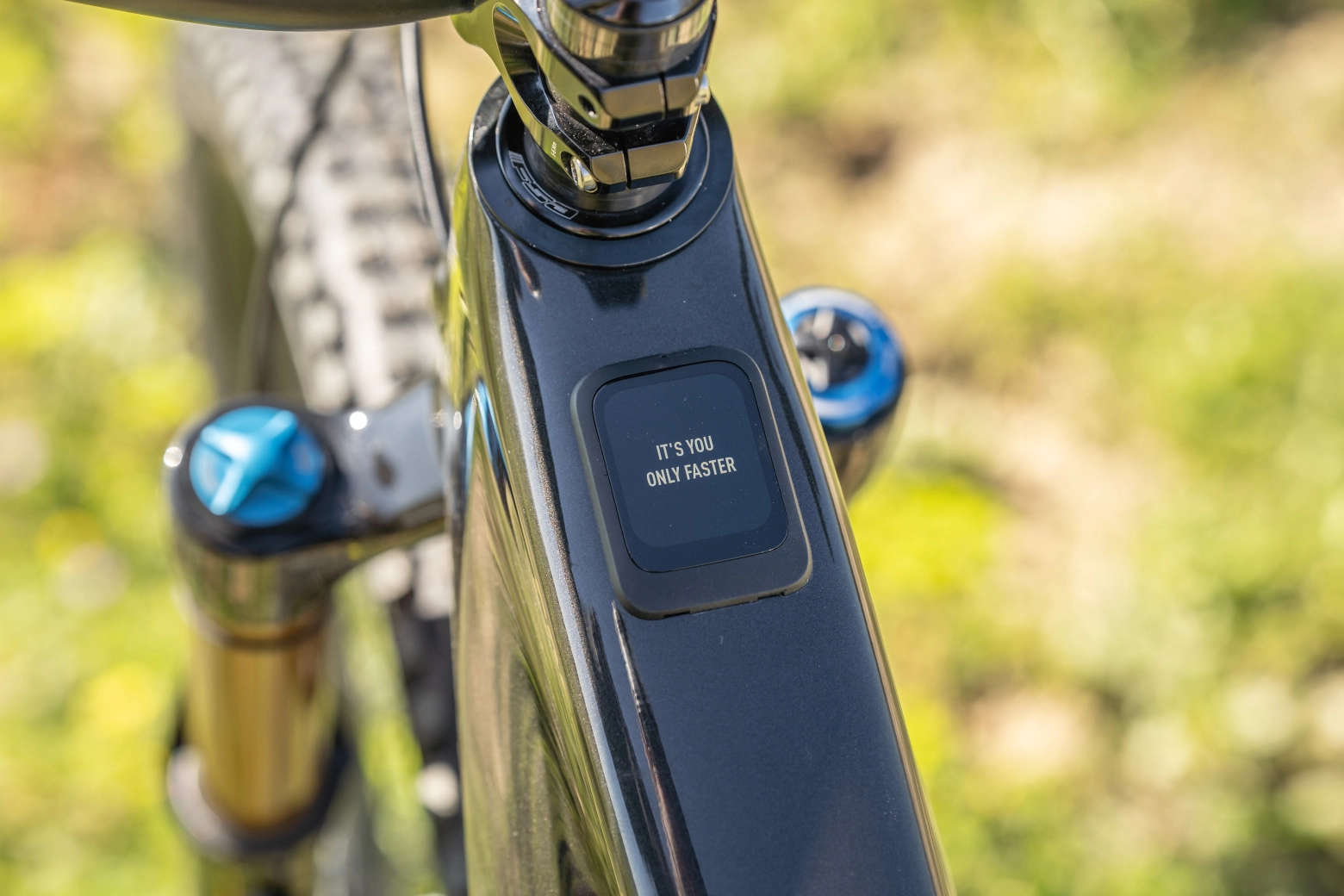
The eye is quickly drawn to the new MasterMind display, which, despite its modest size, looks really good, thanks to its good definition and contrast.
Unlike its predecessor, next to the MasterMind display there is no button for turning the bike on or off, which is done from the remote control on the handlebars.
The remote control, which on the Turbo Levo is not wireless, has a design that seems to us to be very successful, because with the right size they have achieved a design that makes you do not need to look at it at all, thanks to its central button in relief that will make it simple and intuitive to touch its use.
A detail that is also new in the Gen4 is the charging port, which we find in the vertical tube and is very well executed with an easy to use magnetized cover.
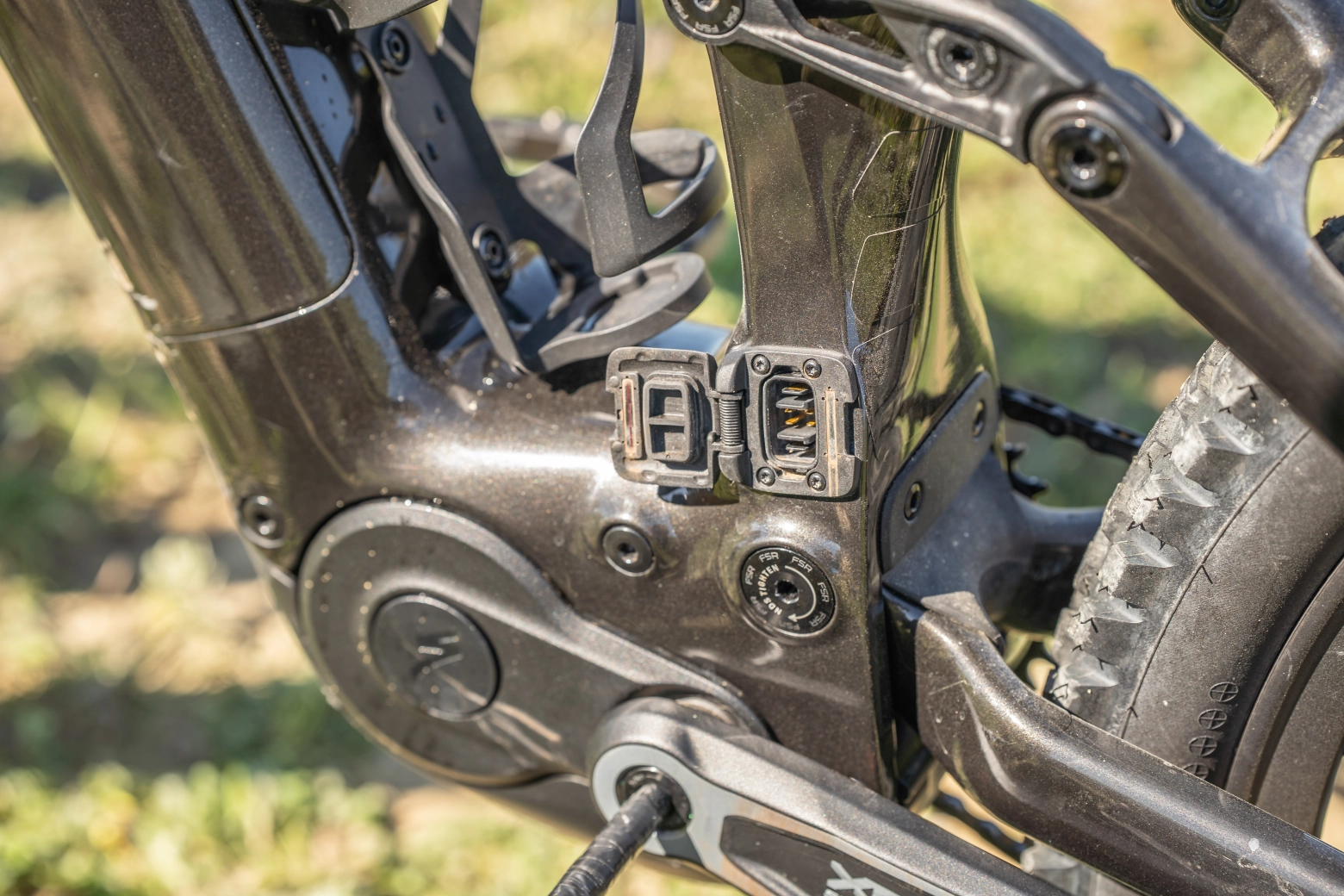
As always, we weighed it before putting the pedals on and proceeded with our basic adjustments to go out riding.
On our scale we got the figure of 23.85 kg in size S4. A figure that, while positioning it as one of the full power bikes that has better weight in relation to its capacity, it has gained a few grams over its predecessor. Although much of this is due to a more solid and reinforced assembly.
We set off and the first thing we wanted to do was get to grips with the controller and try out all the assistance options.
The traditional modes of the Turbo Levo we already knew and we know the possibilities offered by its adjustment in the application, which allows us to leave them completely to our liking. But the novelty of the AUTO mode is something that was missing on the Turbo Levo and had been offered, for some time, by other engines.
With this mode you get a very natural pedaling, so much so that it became our favorite mode from the beginning.
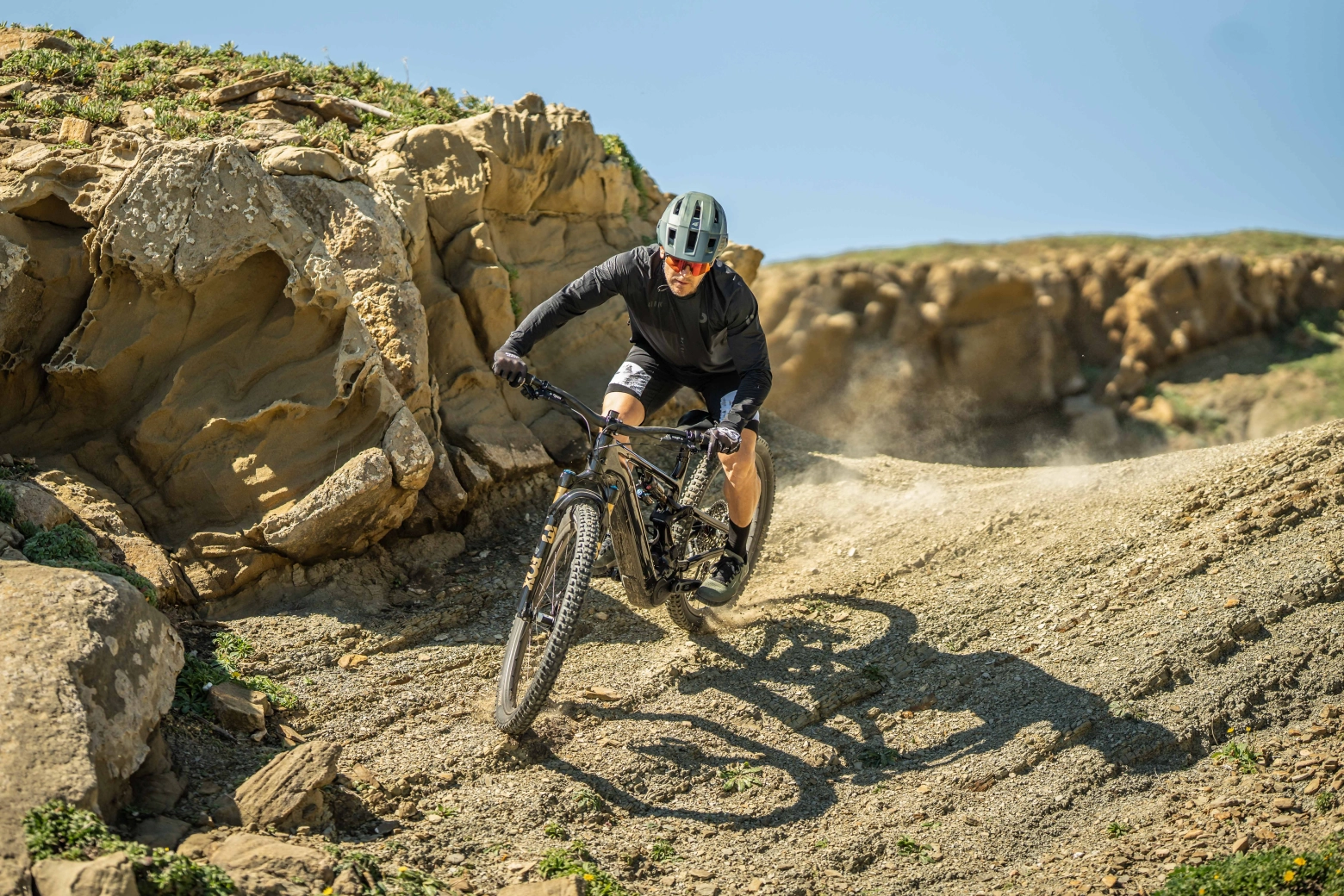
On flat stretches where there is no difficulty whatsoever, we feel that we pedal practically like a normal bike, but as the terrain slopes upwards we receive more help, until we reach those almost impossible climbs that are sometimes the challenge of the day. Here, not only does it get to give us the full power of the motor, but it does so with a feel that allows us to maintain control at all times and not lose traction.
We made several of these difficult climbs, both in TURBO and AUTO mode, and although a priori it seems that the TURBO will give us more thrust, the truth is that when we reach the maximum demand, both modes give us the full power of the engine, being the AUTO more controllable and allowing us to crown successfully in the worst trialeras.
In these tests we could perceive the increased power of the 3.1 engine, which has reached levels at which we began to think that more power may not be useful, as it compromises the control of the bike and the traction of the rear wheel.
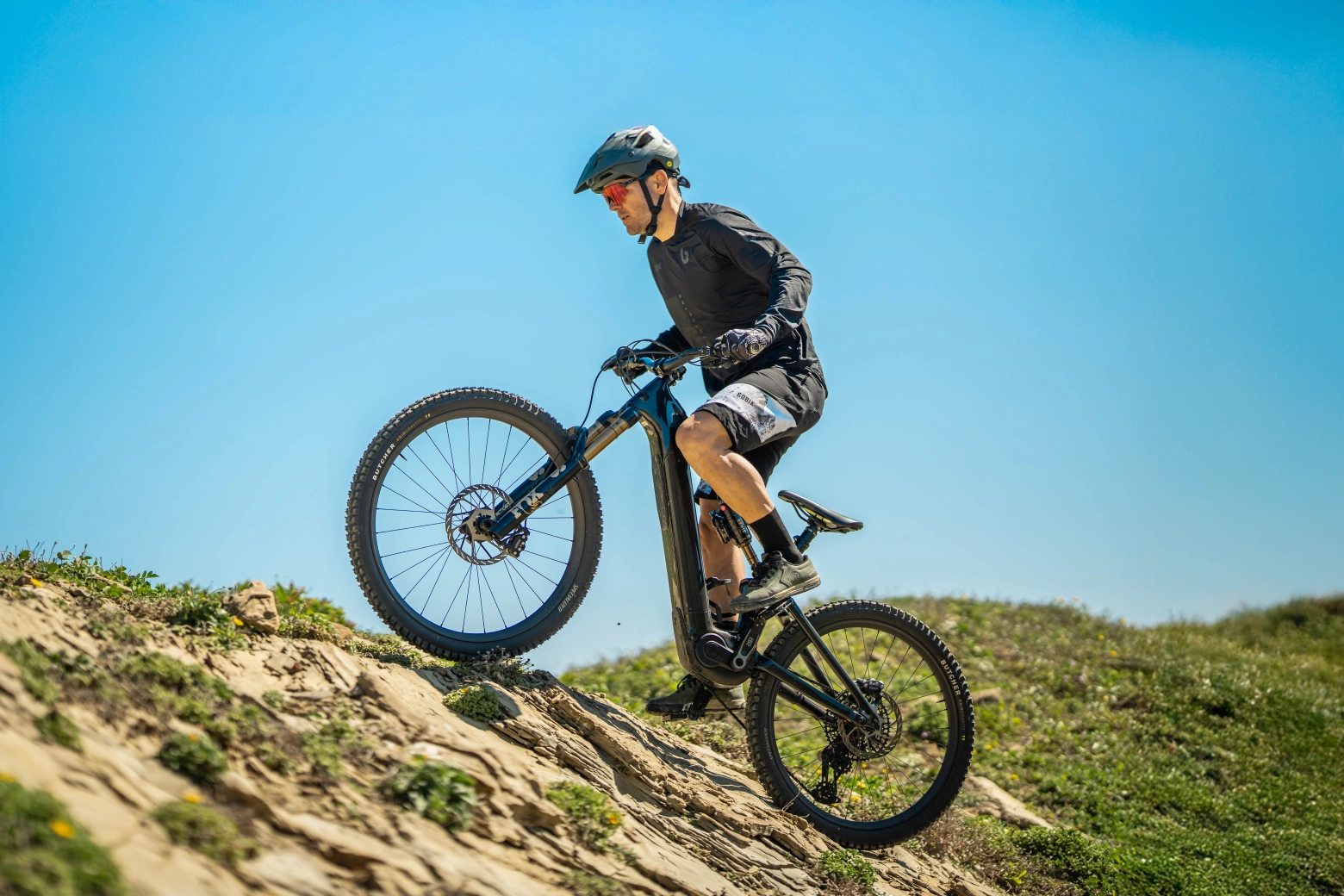
We also tested the micro-adjustment modes, both normal and dynamic, liking the latter somewhat more, since it does not limit us at some point of extra thrust, but they are modes that, unless you are trying to make a conscientious management of battery consumption, do not convince us too much, preferring other modes that do not make us have to be so aware of the controller.
When we have sufficiently tested all the assistance options, we prefer, in the vast majority of situations, the AUTO mode that, in addition, we can customize in three levels in the App, depending on whether we want more or less assistance in relation to our level of effort.
Beyond Trail
Although the most striking new features of the new Turbo Levo have to do with its new engine and firmware, we must not forget that this is one of the eBikes that performs best on the trails, showing a very good balance between handling and capacity. Starting from a model that already works very well, it is logical that we do not see radical changes, but there are some.
In our first tests we started by descending not very aggressive but rather twisty trails. Here we had a small handicap, and that was the S4 size we were wearing, which was not ideal for us. Even so, the bike is agile and we had no problem getting it into every corner.
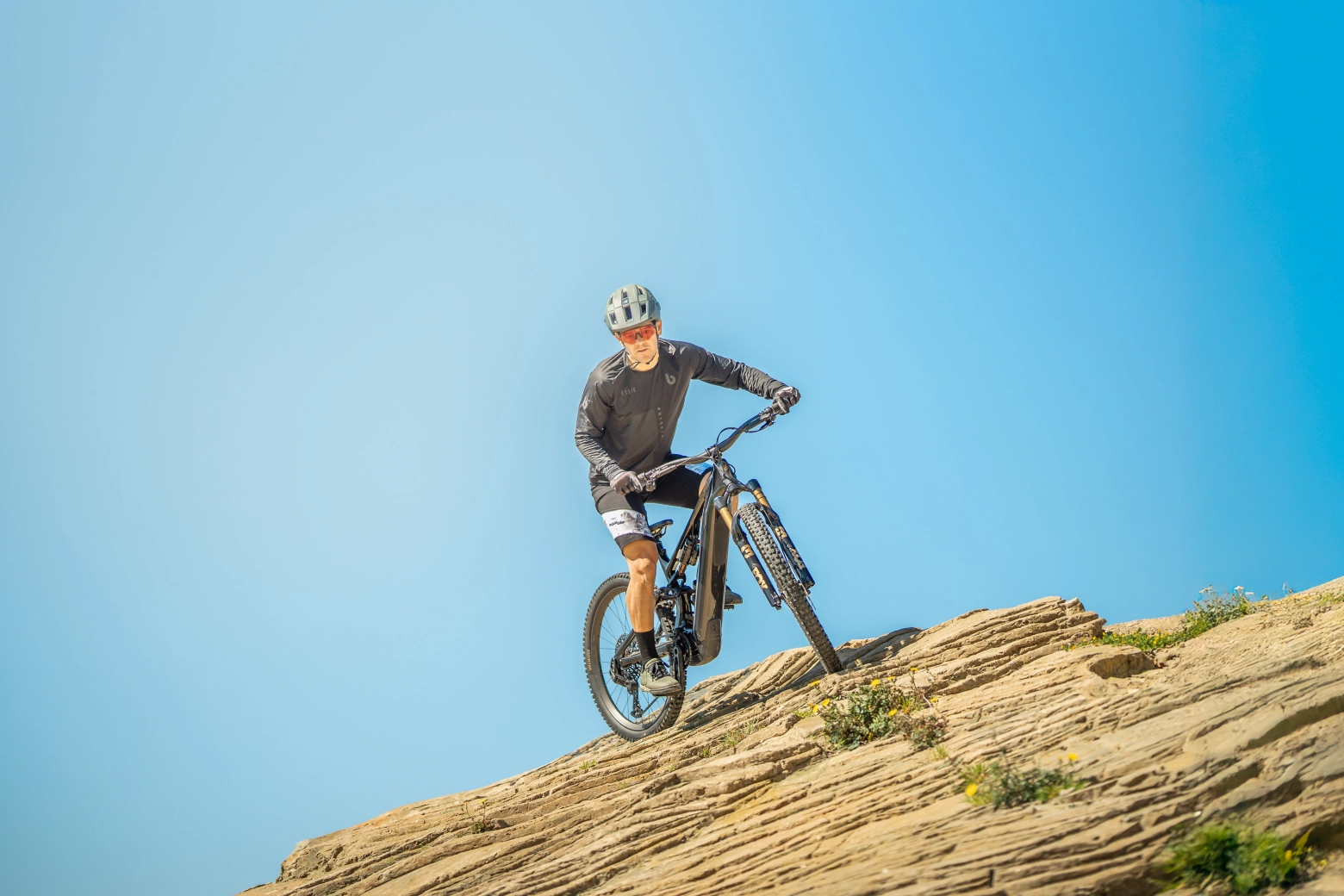
The posture on the bike gives us total control and the handling of the bike is easy. As we got into rougher and more technical terrain, the Turbo Levo showed us what it is capable of, or rather, what it allows us to do, maximizing our own capabilities.
The suspension, in these terrains, brings out its virtues. We already knew the Fox 38 Factory fork with GripX2 cartridge, and it has shown us, once again, that it has few rivals when it comes to difficult conditions. It is capable of filtering out the smallest irregularities, keeping our hands intact for when the demanding sections arrive, and here it offers spectacular control, keeping the wheel in contact with the ground and maximizing grip.
At the rear we have the novelty of the Genie shock absorber, which offers a clear improvement in the absorption of medium level impacts. In general, more suspension travel is used in light and medium impacts, as we can feel and check by means of the control panel. But the interesting thing comes when we see that in strong receptions or more serious impact we do not stop. By fine tuning the adjustment we can use the entire stroke of the shock absorber having, in much of it, an outstanding absorption capacity, and a last progressive stretch for when the thing is more serious.
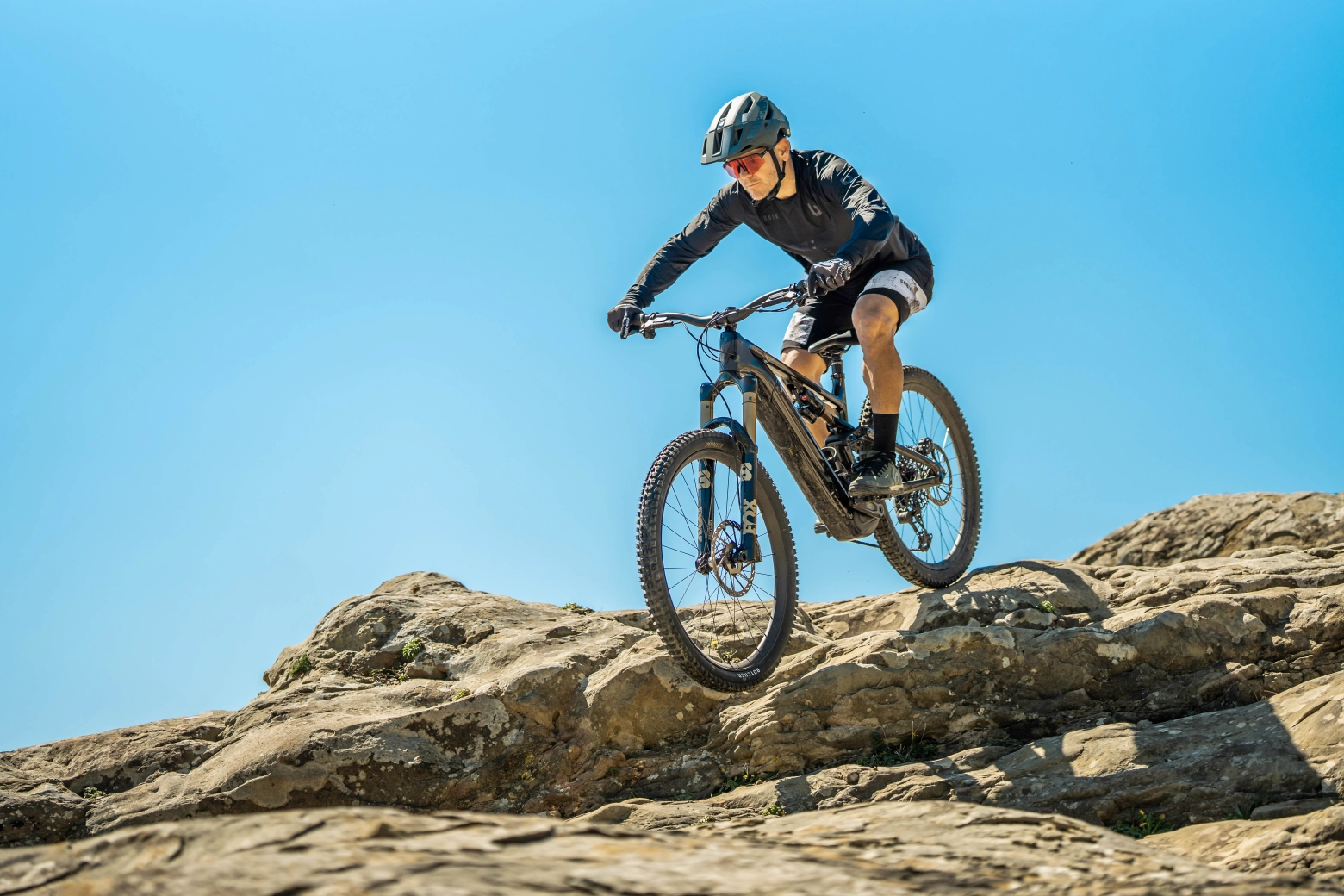
Overall, the Turbo Levo 4 offers us a very high capacity in technical and aggressive sections and, although it does not have the longest travel that we can see on enduro bikes, the truth is that we do not miss it and we do have the agile handling of a Trail bike.
As for the components on our test unit. Once again, the Sram T-Type drivetrain is more than adequate, especially considering the torque it has to withstand. The rest of the components are up to standard, as is normal, considering the level of assembly, highlighting the smooth operation of the Bike Yoke seatpost and the tremendous forcefulness of the braking of the Maven. Likewise, the new Butcher tires with Grid Gravity casing offer excellent safety and grip with their T9 compound.
Conclusion
After several weeks with the Specialized Turbo Levo 4 we can say that the increase in power but, above all, the bike's management of the engine and the new modes of use and possible adjustments, are the main improvement offered by this new version. In addition, it comes with a screen and a remote control that clearly improves what was offered so far.
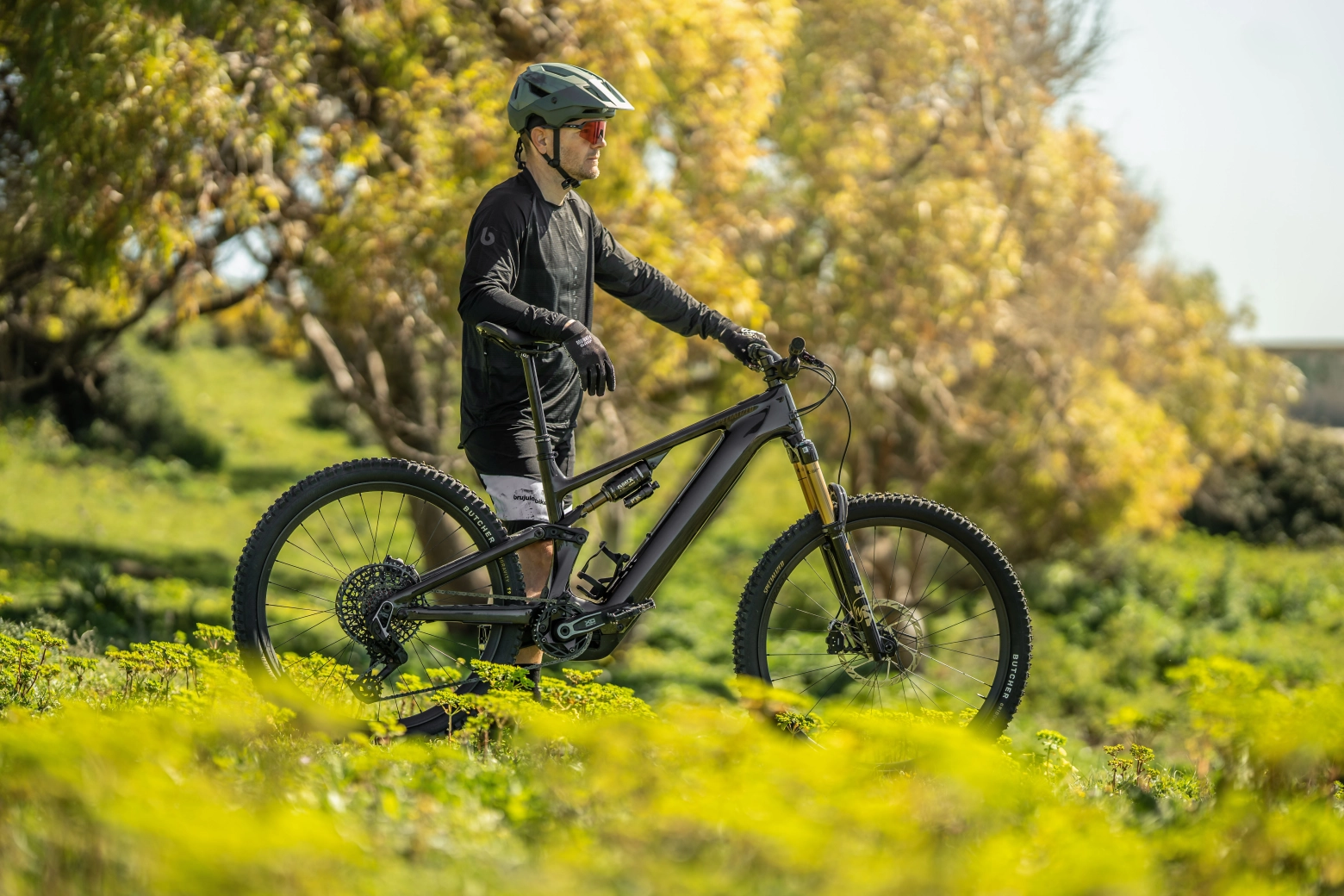
In terms of trail performance, which is what we are looking for after all in this type of bike, we already came from a bike with very high performance, and in this fourth generation are enhanced even more if possible.
The aesthetic change may please more or less, but the evolution in terms of performance and capacity is undeniable, so that this Turbo Levo 4 is once again positioned as one of the major references in the eBike sector.
At the moment, the Turbo Levo 4 range is presented in four models made of carbon. Ranging from the spectacular S-Works with the most premium engine and a luxury assembly that costs 14,499 €, to the Comp Carbon that costs 7,999 €. The Pro version that we have tested, comes to market at a price of € 11,999.
Specialized Turbo Levo 4 Pro: specifications, weight and price
- Frame: Levo 4 frame, 150mm
- Fork: Fox Float 38 Factory GripX2, 160mm
- Shock: Fox Float X Factory GENIE
- Motor: Specialized 3.1, 101Nm torque, 666W power
- Battery: 840Wh
- Brakes: Sram Maven Silver, 200 / 220mm discs
- Controller: Sram AXS Pod Controller
- Rear Derailleur: Sram XO Eagle Transmission
- Cassette: Sram XO 1295, 10-52
- Chain: Sram XO
- Crankset: Sram XO, 155mm, 34t Chainring
- Wheelset: Roval Traverse HD, DT 350 hubs, 29” / 27,5”
- Front tire: Specialized Butcher Grid Gravity T9, 29x2,4”
- Rear tire: Specialized Butcher Grid Gravity T9, 27,5x2,4”
- Stem: Industry Nine A35, 35mm clamp, 40mm length
- Handlebar: Race Face ERA Carbon, 80mm
- Grips: Deity Lockjaw
- Saddle: Specialized Bridge Mimic Expert
- Seatpost: Bike Yoke Revive Max 3.0. S2 125mm, S3 160mm, S4 185mm, S5/6 213mm
- Weight: 23.85Kg
- Price: 11,999€